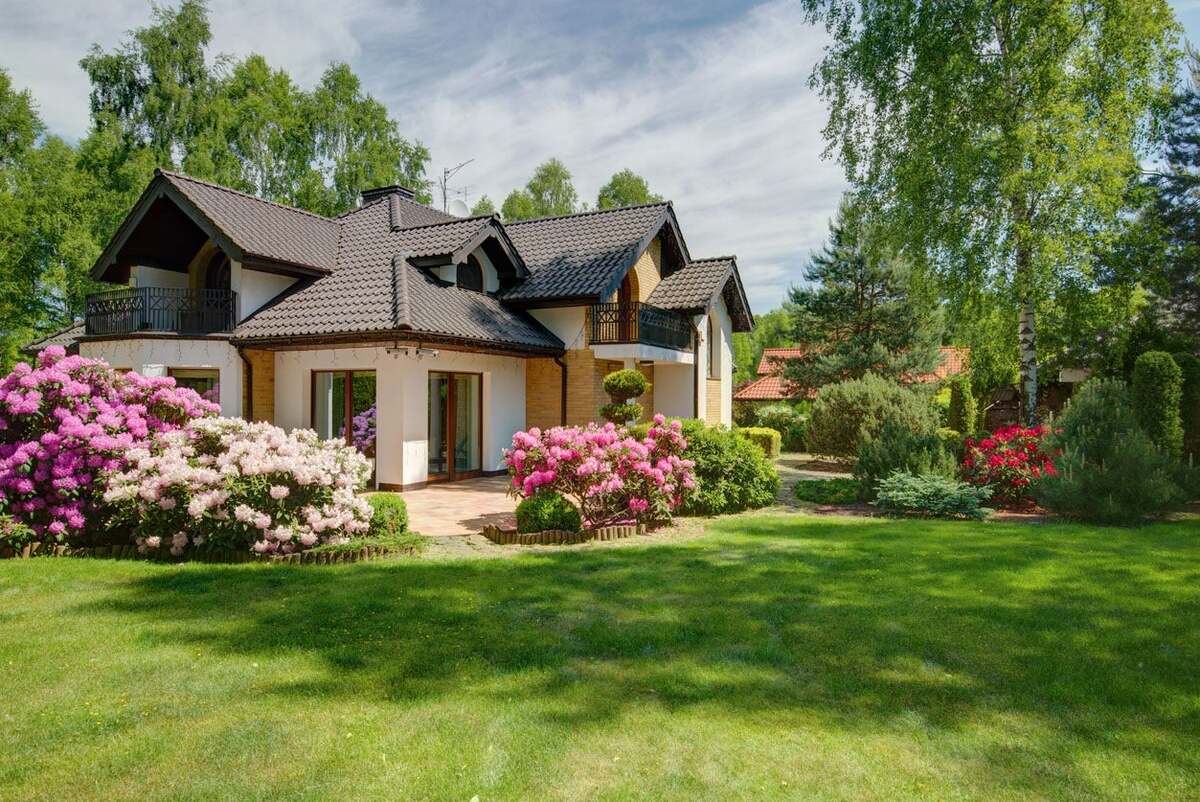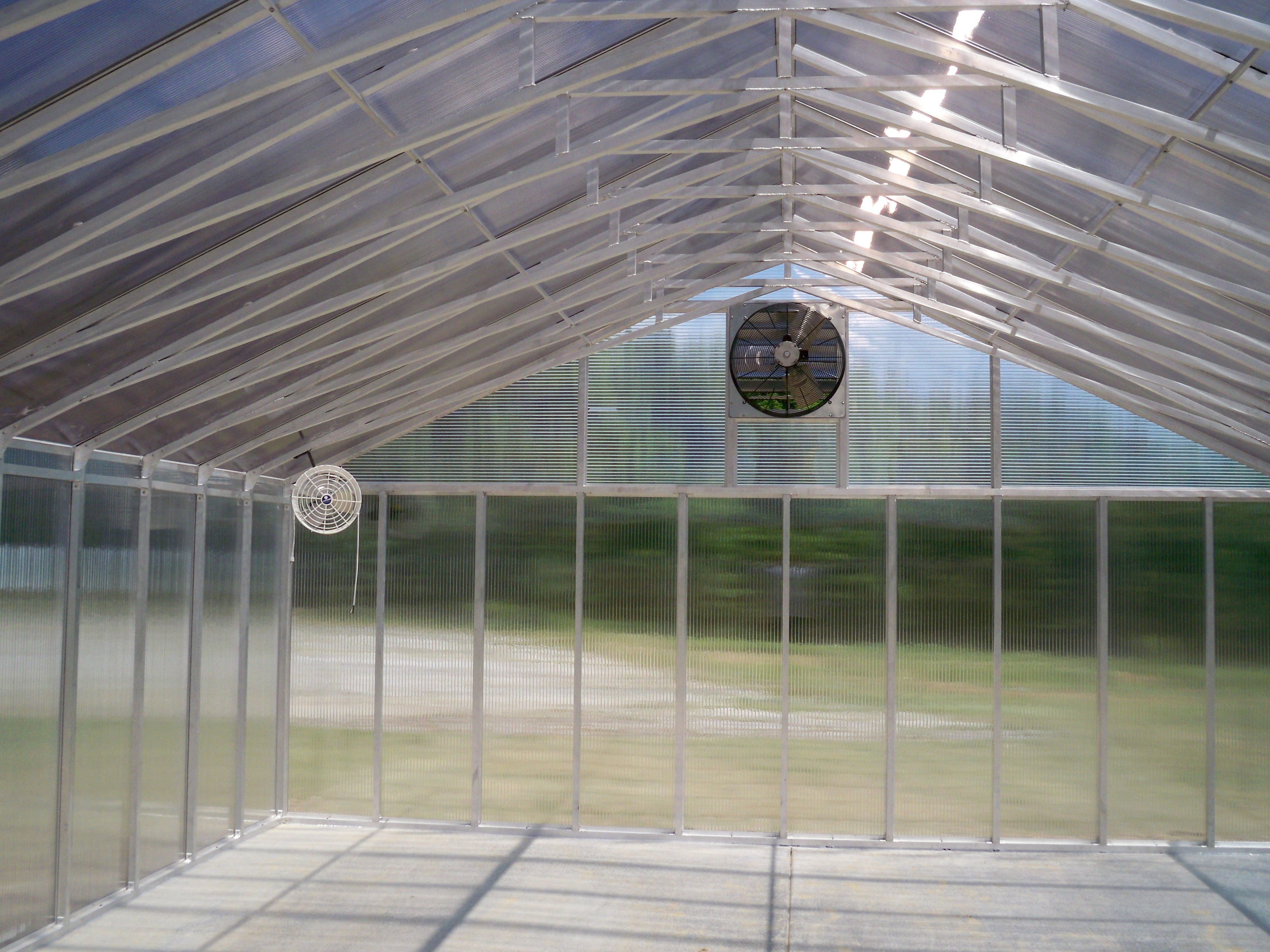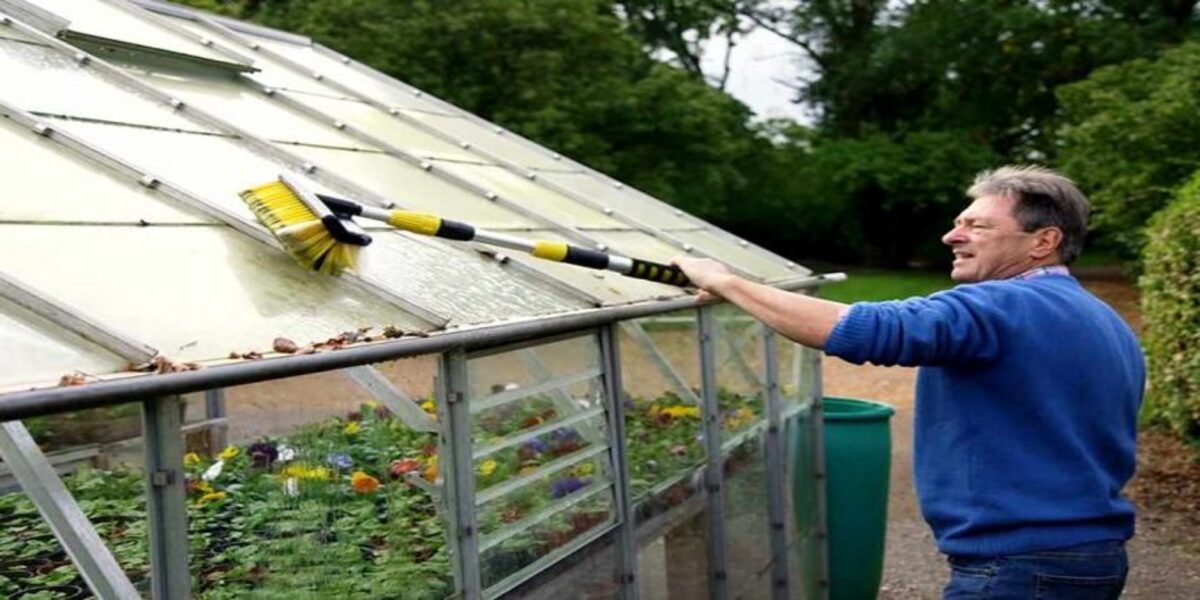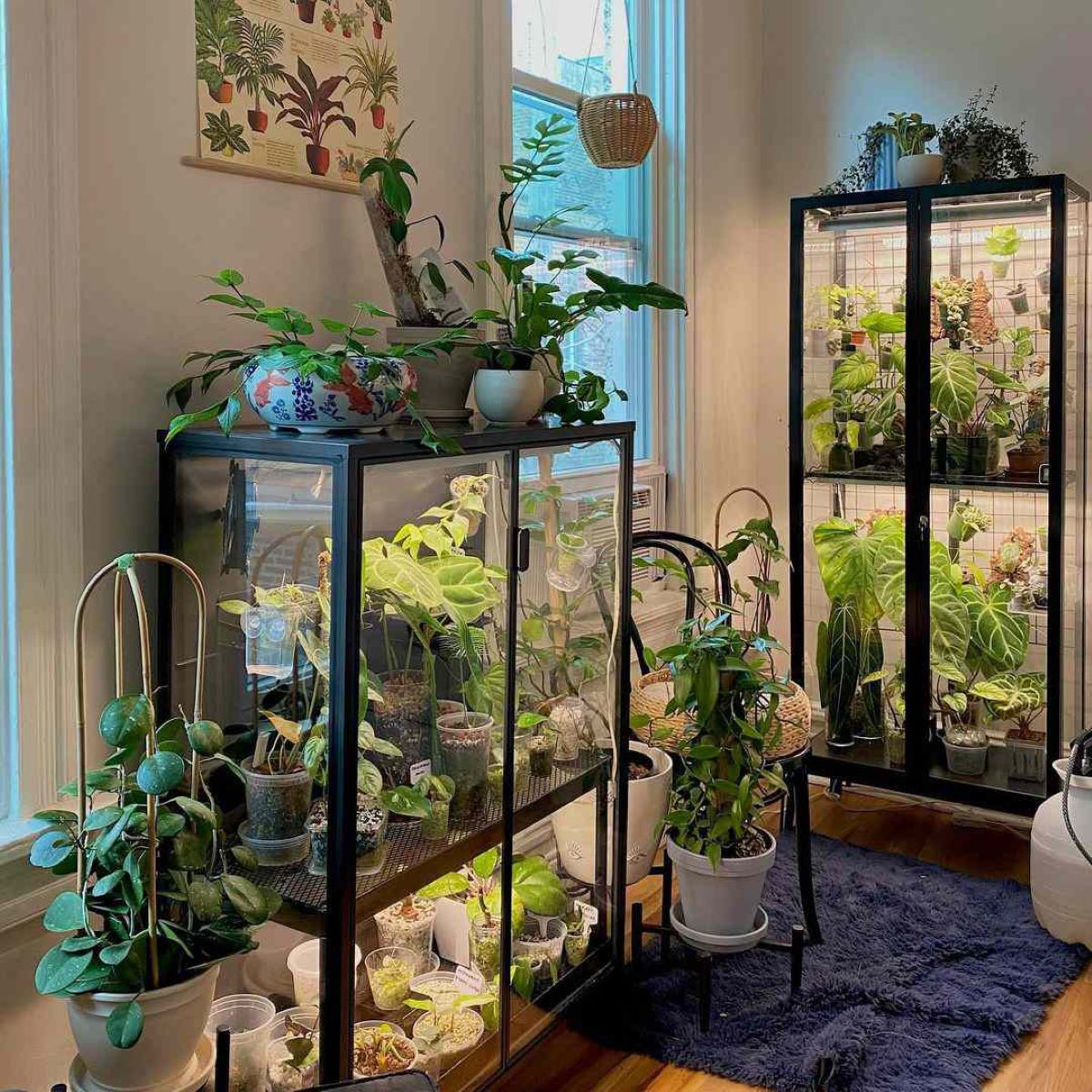Home>Garden Design>How To Design A Greenhouse
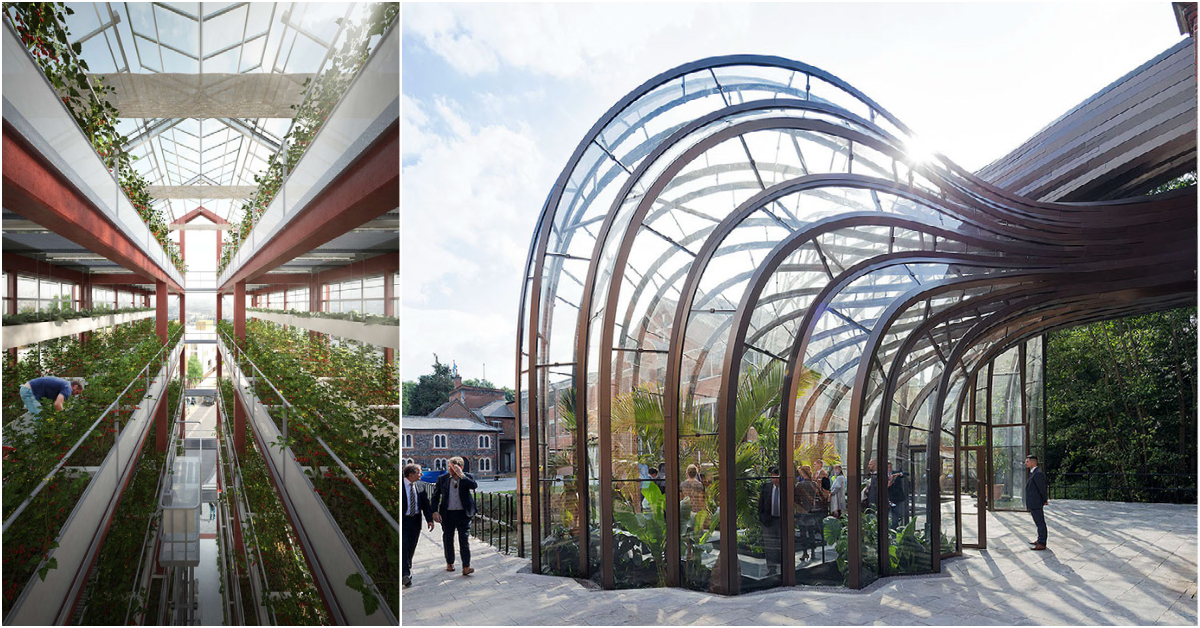

Garden Design
How To Design A Greenhouse
Modified: January 22, 2024
Learn how to incorporate landscape design principles into designing your own greenhouse for a sustainable and visually pleasing structure.
(Many of the links in this article redirect to a specific reviewed product. Your purchase of these products through affiliate links helps to generate commission for Chicagolandgardening.com, at no extra cost. Learn more)
Table of Contents
Introduction
Welcome to the world of landscape design, where creativity and nature intertwine to create stunning outdoor spaces. If you have a passion for design and a love for the environment, then landscape design could be the perfect field for you.
Landscape design is an art form that combines elements of architecture, horticulture, and sustainability to create beautiful and functional outdoor spaces. It involves analyzing a site, understanding the natural features and constraints, and designing a plan that enhances the landscape while respecting the surrounding environment.
One aspect of landscape design that has gained significant popularity in recent years is the incorporation of a greenhouse. A greenhouse is a specialized structure that allows you to create and control the ideal growing conditions for plants, making it a valuable addition to any landscape design.
Whether you’re a professional landscape designer or a passionate gardener, understanding the ins and outs of greenhouse design is essential. In this article, we will guide you through the process of designing a greenhouse, from choosing the location to implementing sustainable practices. By the end, you will have the knowledge and inspiration to create your own thriving greenhouse oasis.
So, let’s embark on this green journey and discover how you can design a greenhouse that not only enhances the beauty of your landscape but also promotes sustainability and nurtures your love for gardening.
Choosing the Location
When it comes to designing a greenhouse, one of the first and most important decisions you need to make is choosing the right location. The location of your greenhouse will determine its exposure to sunlight, wind patterns, and accessibility, which are all crucial factors for the successful growth of plants.
Here are some key considerations to keep in mind when selecting the location for your greenhouse:
- Sunlight: Greenhouse plants rely heavily on sunlight for photosynthesis and growth. Therefore, it is crucial to choose a location that receives optimal sunlight throughout the day. Look for an area that is not shaded by trees, buildings, or other structures, and preferably facing south or southeast to maximize exposure to the sun’s rays.
- Wind patterns: The wind can have a significant impact on the greenhouse, affecting temperature, humidity, and even the structural integrity. Depending on your region, strong winds can potentially damage the greenhouse or disrupt the airflow. Select a location that is sheltered from strong winds or consider installing windbreaks to protect your greenhouse.
- Accessibility: Think about the practicality of accessing your greenhouse. You’ll want a location that is easily accessible for regular maintenance tasks like watering, fertilizing, and harvesting. Additionally, consider the distance from your water source and any other amenities or utilities that may be needed.
- Adjacent structures: Take into account the nearby structures such as buildings, fences, or walls. These structures can provide additional shelter and support for your greenhouse, as well as impact the overall aesthetics of your landscape design.
- Utilities: Consider the availability of utilities such as water and electricity in the chosen location. Running water is essential for irrigating plants, and electricity may be required for lighting, heating, or cooling systems. Plan your greenhouse location near a water source and ensure easy access to electrical outlets if needed.
By carefully evaluating these factors and selecting a suitable location, you can lay the foundation for a successful and thriving greenhouse. Once you have determined the ideal spot, you can move on to the next step in designing your greenhouse – selecting the structure that will best suit your needs.
Selecting the Greenhouse Structure
Choosing the right structure for your greenhouse is crucial as it will directly impact the functionality, aesthetics, and longevity of your greenhouse. There are various greenhouse structures available, each with its own advantages and considerations.
Here are some popular greenhouse structures to consider:
- Traditional Glass Greenhouse: This classic greenhouse structure is made of glass panels and offers excellent light transmission, creating an ideal environment for plants. Glass greenhouses provide good insulation and durability, but they can be expensive to build and require regular maintenance.
- Polycarbonate Greenhouse: Polycarbonate greenhouses are constructed with panels made of a durable and lightweight material called polycarbonate. These panels provide good insulation and diffused light, protecting plants from excessive heat or cold. Polycarbonate greenhouses are more affordable and easier to install than glass, making them a popular choice among greenhouse enthusiasts.
- High Tunnel: High tunnels, also known as hoop houses, are simple and cost-effective greenhouse structures. They are typically made of metal or PVC hoops covered with a single layer of greenhouse film. High tunnels are great for extending the growing season and protecting crops from adverse weather conditions. However, they have limited height and ventilation options.
- Lean-to Greenhouse: A lean-to greenhouse is attached to an existing structure, such as a house or garage. This type of greenhouse utilizes the wall of the existing building, reducing the need for additional construction and providing extra insulation. Lean-to greenhouses are space-saving and convenient, but they may have limitations in terms of sunlight exposure and size.
- Modular or DIY Greenhouse: If you have specific design requirements or prefer a customizable option, a modular or DIY greenhouse may be the right choice for you. These types of greenhouses allow you to build a structure according to your specifications, using materials like wood, PVC, or metal framing. They offer flexibility in size, design, and features, but they may require more time and effort for construction.
Consider your budget, space availability, aesthetic preferences, and specific needs when selecting the greenhouse structure that’s right for you. Additionally, think about the future expansion or modifications you may want to make to accommodate your growing gardening passion.
Once you’ve chosen the structure, the next step is to consider the materials that will make up your greenhouse. The choice of materials will impact the functionality, longevity, and sustainability of your greenhouse, so it’s an important decision to make.
Considerations for Materials
When it comes to building a greenhouse, selecting the right materials is crucial for both functionality and sustainability. The materials used will impact the durability, insulation, light transmission, and overall performance of your greenhouse. Here are some important considerations to keep in mind when choosing materials:
- Frame Materials: The frame of your greenhouse holds the structure together and provides stability. Common options for frame materials include wood, aluminum, and galvanized steel. Wood is a popular choice for its natural look, insulation properties, and ease of customization. Aluminum and galvanized steel are known for their strength, durability, and resistance to corrosion. Select a frame material that suits your budget, design preferences, and climate conditions.
- Glass or Polycarbonate Panels: The choice between glass and polycarbonate panels depends on your specific needs and budget. Glass panels offer excellent light transmission, durability, and heat retention. However, they can be more expensive and heavier compared to polycarbonate panels. Polycarbonate panels are lightweight, durable, and provide good insulation. They also diffuse sunlight, reducing the risk of scorching plants. Consider the climate in your area, as well as your budget, when selecting the panel material.
- Insulation: Insulation is essential in maintaining a stable and controlled environment inside the greenhouse. Proper insulation helps retain heat during colder months and prevents excessive heat buildup in warmer months. Insulating materials such as bubble wrap, fiberglass, or double-layered polycarbonate can be used to improve energy efficiency and temperature regulation within the greenhouse.
- Sealing and Glazing: Proper sealing and glazing are essential for preventing air leaks and ensuring optimal temperature and humidity control within the greenhouse. Select high-quality weather-stripping materials and sealants to prevent drafts and heat loss. Consider using thermal glazing technologies or adding shading systems to regulate the amount of sunlight entering the greenhouse.
- Sustainability: When choosing materials, consider their environmental impact and sustainability. Look for materials that are recycled, recyclable, or renewable. Consider using reclaimed or salvaged materials whenever possible. Additionally, explore sustainable alternatives such as bamboo, which is a fast-growing and renewable resource.
By carefully considering the materials for your greenhouse, you can create a structure that is not only durable and functional but also sustainable and eco-friendly. Now that you have selected the materials, it’s time to move on to the next crucial aspect of greenhouse design – ensuring proper ventilation for your plants.
Installing Proper Ventilation
Proper ventilation is vital for maintaining a healthy and thriving greenhouse environment. It helps regulate temperature, control humidity levels, and prevent the buildup of pests and diseases. Without adequate ventilation, your plants may suffer from overheating, fungal infections, and poor growth. Here are some key factors to consider when installing ventilation in your greenhouse:
- Natural Ventilation: Natural ventilation utilizes openings such as vents, doors, and windows to allow fresh air to circulate. Consider the placement and size of these openings to promote proper airflow. Adjustable vents and ridge vents are popular choices for greenhouse ventilation, as they allow easy control based on weather conditions.
- Mechanical Ventilation: In some cases, natural ventilation may not be sufficient, especially during periods of extreme weather conditions. Mechanical ventilation options such as exhaust fans, evaporative coolers, and circulation fans can help supplement airflow and maintain optimal growing conditions. It’s important to choose energy-efficient options and properly size the fans for your greenhouse.
- Shading and Cooling: Excessive heat can be detrimental to your greenhouse plants. Consider incorporating shading systems, such as shade cloth or blinds, to reduce the intensity of direct sunlight during the hottest parts of the day. Additionally, evaporative cooling systems can help lower the temperature by releasing moisture into the air.
- Automatic Controls: To ensure proper ventilation, consider installing automatic controls that can adjust vents, fans, and other ventilation systems based on preset temperature or humidity levels. These controls can help automate the ventilation process and provide a more hands-off approach to greenhouse management.
- Optimal Airflow: Proper airflow is crucial for preventing stagnant air pockets and ensuring even distribution of temperature and humidity. Avoid placing large obstacles in the greenhouse that could obstruct airflow, such as large plants or equipment. Utilize greenhouse staging or benches to elevate plants and promote better air circulation.
Remember to consider your specific climate conditions and the types of plants you will be growing when designing the ventilation system. Certain plants may have specific temperature and humidity requirements, and adjusting the ventilation accordingly can help create the ideal microclimate for their growth.
Proper ventilation not only keeps your greenhouse plants healthy but also helps reduce the risk of pests and diseases. With the ventilation system in place, you can now focus on designing an efficient irrigation system to ensure your plants receive the water they need without waste or excessive effort.
Designing the Irrigation System
An effective and efficient irrigation system is essential for maintaining proper hydration and promoting healthy plant growth in your greenhouse. Designing a well-thought-out irrigation system requires consideration of factors such as water source, plant water requirements, and the desired level of automation. Here are key steps to designing an effective irrigation system:
- Water Source: Determine the water source for your greenhouse. This could be a municipal water supply, well water, rainwater collection system, or a combination of these sources. Consider the availability, quality, and cost of the water source to determine the most suitable option for your needs.
- Watering Method: Choose the appropriate watering method based on the specific needs of your plants and the type of greenhouse. Common watering methods include drip irrigation, overhead sprinklers, or a combination of both. Drip irrigation is efficient, delivering water directly to the root zone of plants, while sprinklers provide broader coverage. Consideration should be given to the water requirements, root depth, and spacing of your plantings.
- Irrigation Schedule: Establish an irrigation schedule based on the water requirements of your plants and the environmental conditions inside the greenhouse. Factors such as temperature, humidity, and plant growth stage can influence the frequency and duration of watering. Consider using smart irrigation controllers that can adjust watering schedules based on real-time weather data and soil moisture levels.
- Watering Efficiency: Improve water efficiency by implementing techniques such as mulching, which helps retain moisture in the soil and reduce evaporation. Ensure proper water distribution by installing pressure regulators and flow control devices. Regularly monitor and maintain your irrigation system to prevent leaks, clogs, or inefficient water distribution.
- Automation: Consider automating your irrigation system to simplify maintenance and ensure consistent watering. Timer-based irrigation controllers or sensor-based systems can help automate the watering process, ensuring that plants receive water at the right time and in the right amounts.
- Water Conservation: Promote water conservation practices by collecting rainwater, recycling and reusing water when possible, and incorporating water-saving technologies such as drip irrigation. Additionally, consider using soil moisture sensors to avoid overwatering and to water plants only when necessary.
Designing an efficient irrigation system will not only ensure healthy plant growth but also conserve water and reduce costs. By customizing the irrigation system to suit your specific plant needs and considering water conservation practices, you can establish a sustainable and productive greenhouse environment.
Now that you have addressed the watering needs of your plants, it’s time to focus on another critical aspect of greenhouse design – implementing energy-efficient heating to create an optimal growing environment.
Implementing Energy-Efficient Heating
Creating and maintaining the ideal temperature inside your greenhouse is crucial for the health and growth of your plants. However, heating a greenhouse can be energy-intensive and costly. Implementing energy-efficient heating methods is essential to minimize energy consumption and reduce environmental impact. Here are some strategies to consider when implementing energy-efficient heating in your greenhouse:
- Insulation: Proper insulation is key to retaining heat and reducing energy loss in your greenhouse. Insulate the walls, roof, and foundation to prevent drafts and keep the heat inside. Insulating materials such as bubble wrap, thermal curtains, or double-layered panels can be used to improve heat retention and temperature stability.
- Passive Solar Design: Utilize passive solar design principles to harness the sun’s heat and reduce the need for artificial heating. Position your greenhouse to receive maximum sunlight during the day and incorporate thermal mass, such as water barrels or masonry, to absorb and release heat during colder periods. Properly oriented glazing and shading systems can also help regulate solar heat gain.
- Energy-Efficient Heating Systems: Consider using energy-efficient heating systems, such as radiant floor heating, geothermal heating, or solar heating. Radiant floor heating provides even heat distribution from the bottom up, reducing heat loss. Geothermal heating uses the stable temperature underground to heat the greenhouse, while solar heating utilizes solar collectors to capture and store solar energy for heating purposes.
- Heating Control: Install a programmable thermostat or a climate control system to regulate and optimize heating. Set temperature limits and time schedules to ensure heating is only active when necessary. Connecting the heating system to temperature and humidity sensors can help fine-tune heating requirements based on plant needs and environmental conditions.
- Energy Monitoring: Monitor and analyze your energy consumption to identify potential areas of improvement. Use energy-efficient equipment and regularly maintain heating systems to ensure they are functioning optimally. Consider using energy-saving technologies, such as LED grow lights or energy-efficient fans, to further reduce energy usage.
- Alternative Heating Sources: Explore alternative heating sources, such as biomass boilers, wood-burning stoves, or heat pumps. These systems utilize renewable energy sources and can be cost-effective in the long run. Ensure you comply with local regulations and safety guidelines when using alternative heating sources.
By implementing energy-efficient heating methods, you can create a sustainable and eco-friendly greenhouse environment while minimizing operational costs. Remember to regularly monitor and assess the performance of your heating system to make necessary adjustments and improvements.
Now that you have addressed heating needs, it’s time to shed some light on a crucial aspect of greenhouse design – managing natural lighting for optimal plant growth.
Managing Natural Lighting
Natural lighting is essential for the growth and development of plants in your greenhouse. Proper management of natural light ensures that your plants receive the right amount and intensity of sunlight for photosynthesis and overall health. Here are some strategies to effectively manage natural lighting in your greenhouse:
- Orientation and Glazing: Properly orient your greenhouse to maximize exposure to sunlight throughout the day. South-facing orientation is ideal for maximum light exposure. Consider the type of glazing material used for your greenhouse, such as glass or polycarbonate panels, as they can affect the amount of light transmitted. Maintain cleanliness and clarity of glazing to maximize light penetration.
- Shading Systems: Install shading systems to control the amount of sunlight entering the greenhouse and prevent excessive heat buildup. Shade cloths or blinds can be used to reduce light intensity during the hottest parts of the day or for delicate plants that require more shade. Adjustable shading systems provide flexibility to adapt to changing weather conditions.
- Light Diffusion: Consider using materials or coatings that diffuse sunlight to provide more even light distribution throughout the greenhouse. Diffused light reduces the risk of plant sunburn and supports more uniform growth. Specialized glazing options, such as diffused glass or acrylic panels, scatter light to create a more diffused and gentle light environment.
- Light Transmission Control: Some plants may have specific light requirements. Utilize shade cloths or movable panels to selectively block or redirect light to different areas of the greenhouse. This allows for customized lighting conditions depending on the specific needs of plant varieties or growth stages.
- Supplemental Lighting: In regions with limited natural light, or when growing light-demanding plants, supplemental lighting can be used to augment natural light. LED grow lights are energy-efficient and can be tailored to specific light spectrums to meet plant requirements. Use a combination of natural and supplemental lighting to achieve the optimal light levels for your plants.
- Light Monitoring: Monitor light levels in your greenhouse to ensure they fall within the appropriate range for your specific plants. Light meters or sensors can help you evaluate and adjust the amount of natural and supplemental light provided. Regularly assess and adapt your lighting strategies based on plant responses and seasonal variations in sunlight.
By effectively managing natural lighting in your greenhouse, you can provide the optimal growing conditions for your plants while minimizing the risk of light-related issues such as sunburn or inadequate growth. Remember that different plants have varying light requirements, so it’s important to tailor your lighting strategies accordingly.
Now that you have learned about managing natural lighting, let’s explore the importance of incorporating sustainable practices in your greenhouse design.
Incorporating Sustainable Practices
In today’s world, promoting sustainability is more important than ever. Incorporating sustainable practices in your greenhouse design not only reduces your environmental impact but also improves the overall efficiency and longevity of your greenhouse. Here are some key sustainable practices to consider:
- Water Conservation: Implement water-saving techniques such as drip irrigation, mulching, and rainwater harvesting. Use sensors or timers to monitor and optimize watering schedules based on plant needs and weather conditions. Minimize water runoff and wastage by capturing and reusing excess irrigation water.
- Energy Efficiency: Choose energy-efficient heating, cooling, and lighting systems for your greenhouse. Install insulation, weather stripping, and glazing materials that reduce energy loss. Consider utilizing renewable energy sources, such as solar or wind power, to meet your greenhouse’s energy needs.
- Recycling and Waste Management: Implement a recycling program for materials used in your greenhouse, such as plastic pots, containers, and packaging. Compost plant waste to reduce landfill waste and create nutrient-rich soil. Utilize organic and sustainable fertilizers and pest control methods to minimize chemical inputs.
- Native and Sustainable Plant Selection: Opt for native or locally adapted plant species that require fewer resources and are more resilient to local environmental conditions. Prioritize plants that support local biodiversity and provide food and shelter for beneficial insects and wildlife.
- Companion Planting and Crop Rotation: Use companion planting and crop rotation techniques to naturally control pests and diseases, improve soil fertility, and reduce the need for chemical interventions. By diversifying plant species and their placement, you can create a balanced and sustainable ecosystem within your greenhouse.
- Integrated Pest Management (IPM): Implement IPM strategies to manage pest and disease issues without relying solely on chemical pesticides. This includes using biological controls, practicing good sanitation, and monitoring plant health to detect and address problems early on. By employing IPM, you can minimize harm to beneficial insects and maintain a healthy ecosystem.
- Education and Outreach: Promote sustainable practices by sharing your knowledge and experiences with others. Collaborate with local communities, schools, or organizations to educate others about the benefits of sustainable greenhouse gardening and inspire them to adopt similar practices.
Incorporating sustainable practices not only reduces your greenhouse’s ecological footprint but also sets an example for others to follow. By embracing these practices, you contribute to the conservation of natural resources, protect the environment, and create a healthier and more sustainable future.
As we conclude our exploration of greenhouse design and sustainability, we hope you find inspiration to create your own environmentally-friendly and thriving greenhouse.
Conclusion
Designing a greenhouse is an exciting and rewarding endeavor that allows you to create a thriving and sustainable oasis for your plants. By carefully considering factors such as location, structure, materials, ventilation, irrigation, heating, lighting, and sustainable practices, you can design a greenhouse that harmonizes with the environment and promotes optimal plant growth.
The location of your greenhouse is crucial, as it affects factors like sunlight exposure, wind patterns, and accessibility. Select a location that provides optimal sunlight and protection from strong winds, while also considering ease of access and nearby structures.
Choosing the right greenhouse structure is essential for functionality and aesthetics. Options range from traditional glass structures to more cost-effective options like polycarbonate or high tunnels, all with their own advantages and considerations.
Consider the materials used in your greenhouse, ensuring they are durable, energy-efficient, and environmentally friendly. Proper insulation, sealing, and glazing help regulate temperature and energy efficiency, while sustainable materials promote eco-friendliness.
Proper ventilation is critical for maintaining a healthy greenhouse environment. Natural and mechanical ventilation options, along with shading and cooling systems, help control temperature and humidity levels to create an optimal growing environment for your plants.
Designing an efficient irrigation system ensures that your plants receive the right amount of water without waste. Consider your water source, watering method, irrigation schedule, and water conservation techniques to promote healthy plant growth while minimizing resource usage.
Implementing energy-efficient heating systems reduces energy consumption and promotes a sustainable greenhouse environment. Insulation, passive solar design, energy-efficient heating systems, and automation help regulate and maximize heating efficiency.
Managing natural lighting is crucial for plant growth. Proper orientation, glazing, shading systems, light diffusion, and supplemental lighting ensure that your plants receive the optimal amount and quality of light for photosynthesis and maximum growth potential.
Incorporating sustainable practices in your greenhouse design benefits not only the environment but also your plants’ health and overall efficiency. Water conservation, energy efficiency, recycling, native plants, IPM, and education contribute to a greener and more sustainable greenhouse ecosystem.
As you embark on your greenhouse design journey, remember to align your choices with the specific needs of your plants, your own preferences, and the local climate conditions. By creating a sustainable and thriving greenhouse, you can enjoy the beauty of nature while contributing to a more sustainable future for generations to come.
